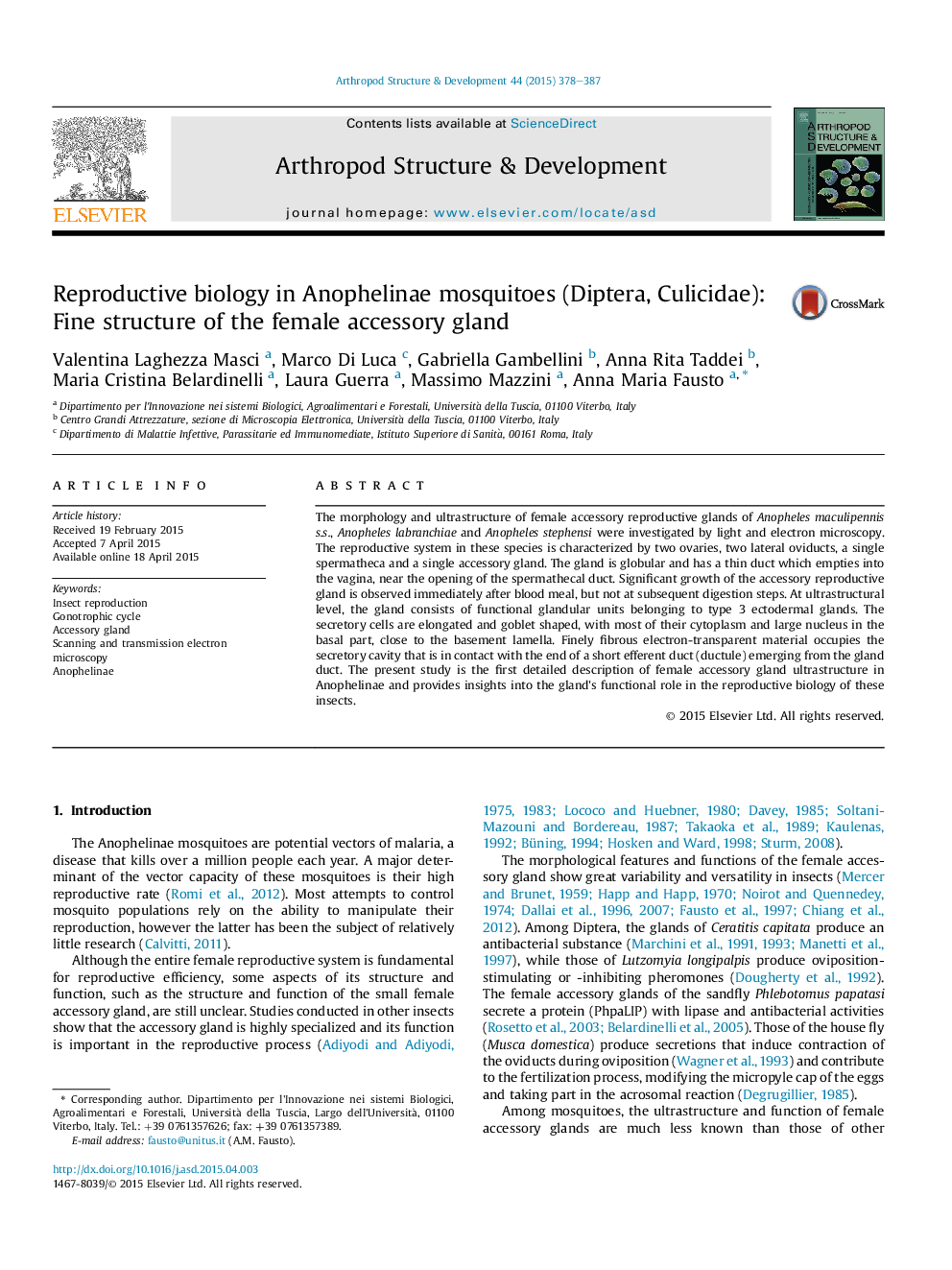| Article ID | Journal | Published Year | Pages | File Type |
|---|---|---|---|---|
| 5888693 | Arthropod Structure & Development | 2015 | 10 Pages |
â¢Female accessory gland in Anophelinae mosquitoes is characterized by globular shape and a thin duct.â¢Fine structure reveals two regions: secretory and duct region.â¢The gland size changes during the gonotrophic cycle.â¢Glandular secretion is released into the vagina near the opening of the spermathecal duct.â¢The results suggest a probable role of the gland in mosquitoes reproduction.
The morphology and ultrastructure of female accessory reproductive glands of Anopheles maculipennis s.s., Anopheles labranchiae and Anopheles stephensi were investigated by light and electron microscopy. The reproductive system in these species is characterized by two ovaries, two lateral oviducts, a single spermatheca and a single accessory gland. The gland is globular and has a thin duct which empties into the vagina, near the opening of the spermathecal duct. Significant growth of the accessory reproductive gland is observed immediately after blood meal, but not at subsequent digestion steps. At ultrastructural level, the gland consists of functional glandular units belonging to type 3 ectodermal glands. The secretory cells are elongated and goblet shaped, with most of their cytoplasm and large nucleus in the basal part, close to the basement lamella. Finely fibrous electron-transparent material occupies the secretory cavity that is in contact with the end of a short efferent duct (ductule) emerging from the gland duct. The present study is the first detailed description of female accessory gland ultrastructure in Anophelinae and provides insights into the gland's functional role in the reproductive biology of these insects.
Graphical abstractDownload full-size image
